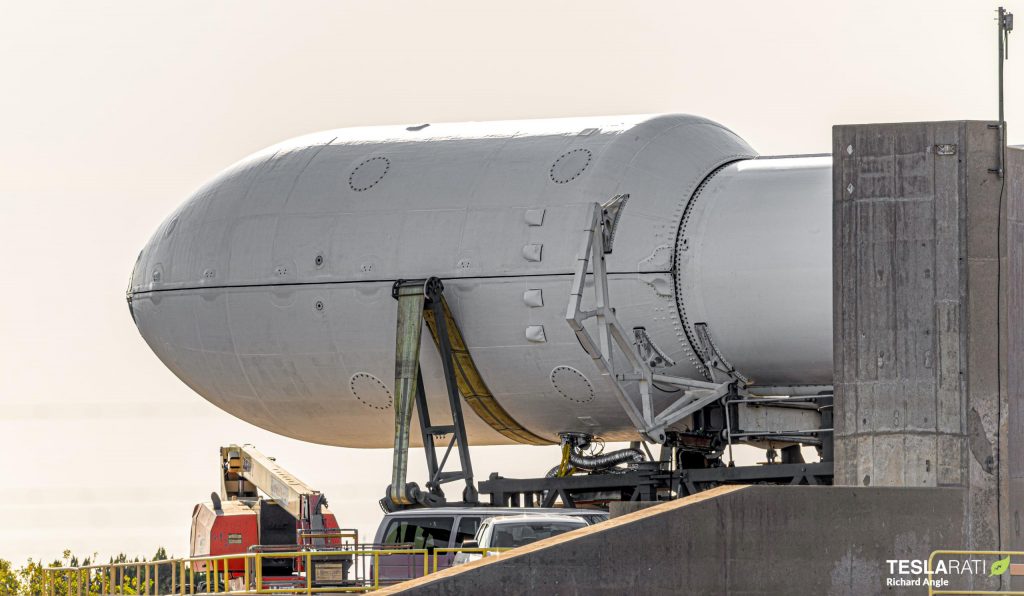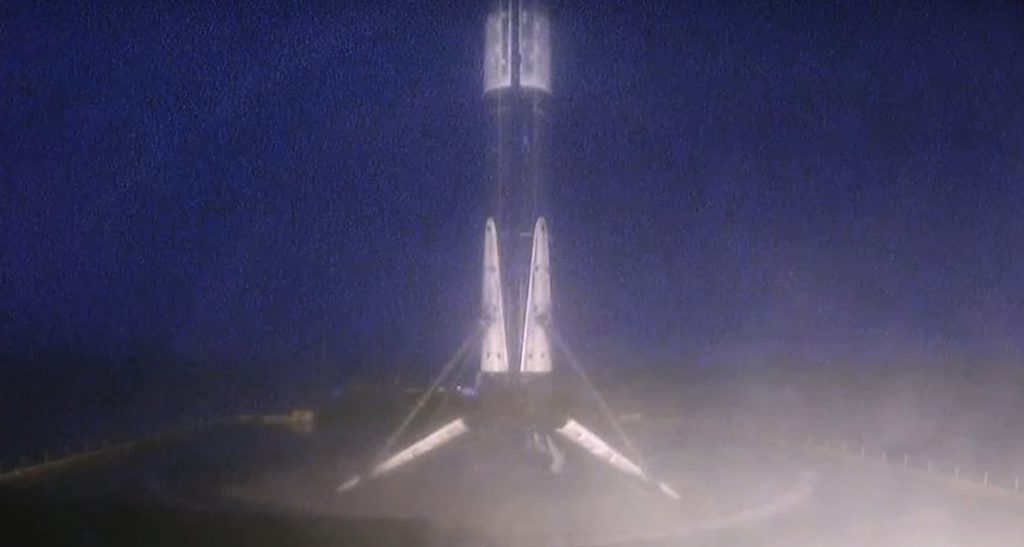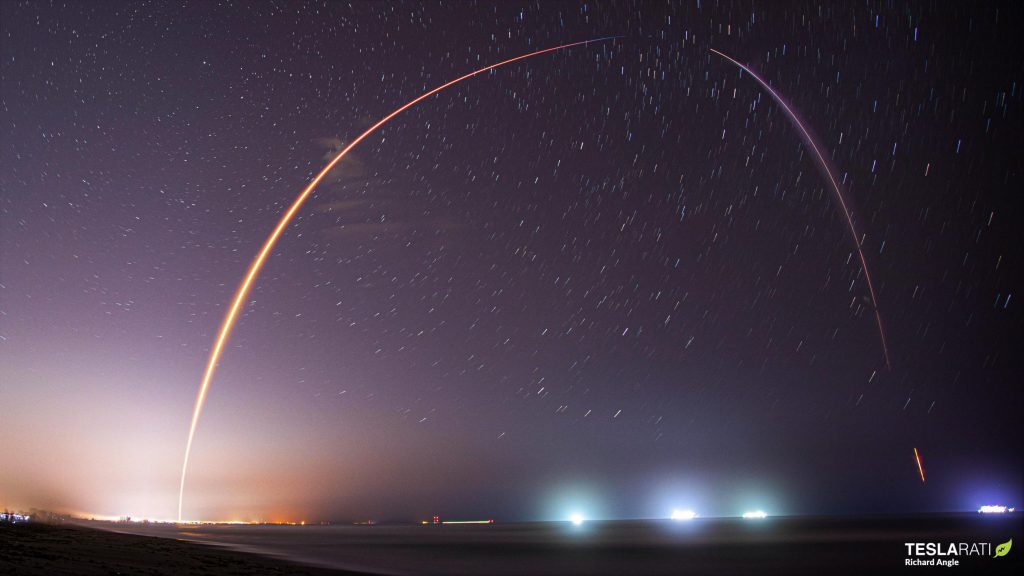In a new rocket reusability first, a SpaceX Falcon 9 booster has successfully completed its ninth orbital-class launch and landing, leaving the company just one mission away from a target that’s been front and center for years.
Known as Starlink V1 L21 or Starlink-21, today’s launch also set no less than three more records on top of Falcon 9’s latest envelope expansion. Aside from the increasingly familiar primary purpose of deploying another batch of 60 operational ‘v1.0’ Starlink satellites, which Falcon 9’s first stage managed without issue, Starlink-21 marked the fastest payload fairing reuse by a huge margin.
Falcon flies for the 9th time tonight
— Elon Musk (@elonmusk) March 14, 2021
SpaceX is certainly doing its best to make up for 2 launches in February – this mission (Starlink-21) will be the third Falcon 9 launch in ~10 days if the schedule holds. After that, Starlink-22 is already scheduled NET March 21st, which would = 4 SpaceX launches in 16 days! https://t.co/vFURGTFQ6E
— Eric Ralph (@13ericralph31) March 13, 2021
(adsbygoogle = window.adsbygoogle || []).push({});
The mission flew both halves of a carbon fiber composite nosecone that first launched just 49 days ago on January 24th, a feat that both crushes the previous record – 87 days – by almost 60% and represents a mere 16 months between the first fairing reuse ever and the first turnaround under 50 days. A Falcon 9 booster was reused for the first time in March 2017 and SpaceX took nearly four years (46 months) from that milestone to achieve the first sub-50-day booster turnaround.
 The first Falcon payload fairing to fly twice in less than 50 days. (Richard Angle)
The first Falcon payload fairing to fly twice in less than 50 days. (Richard Angle)
 Falcon 9 B1051 stuck its ninth landing with no obvious issues. (SpaceX)
Falcon 9 B1051 stuck its ninth landing with no obvious issues. (SpaceX)
Most importantly, though, Falcon 9 booster B1051’s flawless ninth launch and landing leaves SpaceX a single mission – and perhaps as few as 4-6 weeks – away from achieving a goal that’s been at the forefront of its reusable rocketry efforts for at least three years. Back when Falcon 9’s Block 5 upgrade first debuted in May 2018, CEO Elon Musk revealed a target of at least 10 launches per booster with minimal maintenance and 100 or more flights with regular periods of more significant refurbishment.
More recently, a recently-retired executive and one of SpaceX’s most senior employees revealed his opinion that there are no obvious showstoppers preventing the company from flying boosters like Falcon 9 B1051 significantly more than ten times before any major rework or part replacements are required.
SpaceX Falcon boosters likely to surpass Elon Musk’s prime rocket reuse directive
While slightly less spectacular, Starlink-21 also set the record for the shortest time between two SpaceX launches on the same coast (a little over three days) and broke Launch Complex 39A’s pad turnaround record by more than two days. A step further, SpaceX has already scheduled its next launch – Starlink-22 – no earlier than (NET) March 21st, meaning that the company’s other Florida launch pad (LC-40) is also on track to support two launches in ~10 days.
If Starlink-21 and -22 stay put +/- a few days and another booster and Starlink stack are ready, it's entirely possible that SpaceX could complete five orbital launches in March 2021!
— Eric Ralph (@13ericralph31) March 13, 2021
If Starlink-22’s schedule holds, there’s a significant chance that SpaceX will be able to prepare another Starlink mission for flight, potentially making March 2021 the company’s first five-launch month ever.
The post SpaceX rocket booster aces 9th launch and landing for the first time appeared first on TESLARATI.
Article Source and Credit teslarati.com https://www.teslarati.com/spacex-falcon-9-ninth-launch-landing-record-reuse/ Buy Tickets for every event – Sports, Concerts, Festivals and more buytickets.com


Leave a Reply
You must be logged in to post a comment.